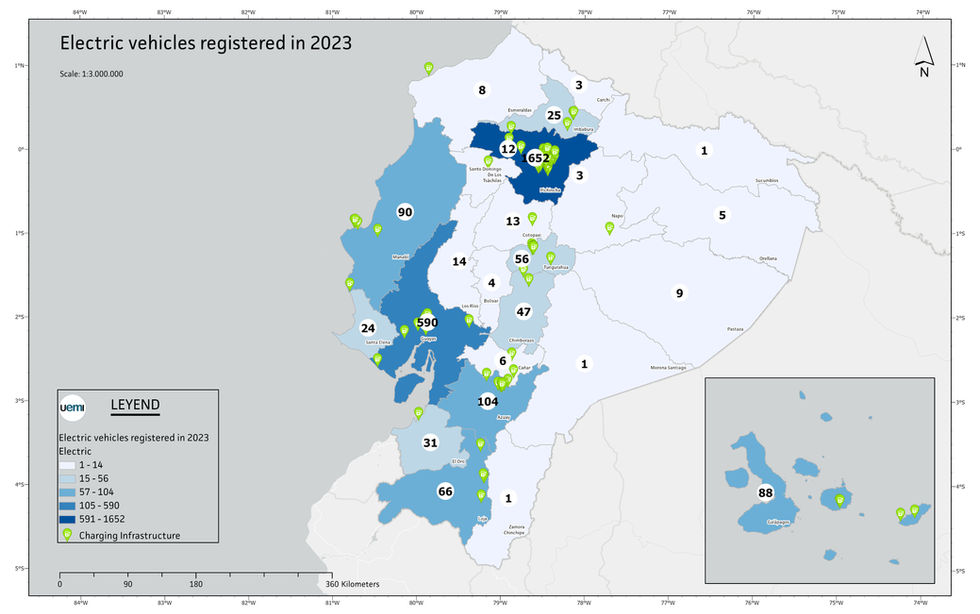Charging stations
As of 2022, Ecuador has 59 charging stations spread across Quito, Guayaquil, Cuenca, Loja, and the Galápagos Islands. These stations are primarily located in shopping malls, high-traffic vehicle areas, and retail shops of brands like KIA and BYD. The network includes a mix of level 1 and level 2 chargers, but only six fast chargers (>50kW) are available.
In contrast, the country has 1,085 conventional fuel stations, and no charging infrastructure exists outside major cities, limiting EV adoption to urban areas. Additionally, Ecuador’s challenging topography, particularly in highland cities like Quito, may increase battery consumption. Further studies on battery performance in local conditions are needed to provide reliable data and reduce range anxiety for EV users.
Maps
English
Spanish
Maps are an essential tool within a Knowledge Management System (KMS), as they allow visualizing large volumes of information in a clear, intuitive and geographically contextualized way. In this case, the available maps provide a view of key data such as the availability of electric power, the location of electric vehicle charging infrastructure, and the number of registered units per province. This representation facilitates informed, evidence-based decision making by immediately showing where opportunities, gaps or intervention needs exist to move towards more sustainable and equitable mobility in Ecuador.
In addition, by integrating layers of social information such as the number of women drivers, people with disabilities, or people who identify as part of the LGBTI population, the KMS maps help incorporate inclusion and social justice criteria into the analysis. It is not just a matter of knowing “where the charging stations are,” but of understanding who can access them and under what conditions. These maps seek to be a powerful tool for planning public policies with a territorial and people-centered approach, aligned with the principles of a just transition.



























